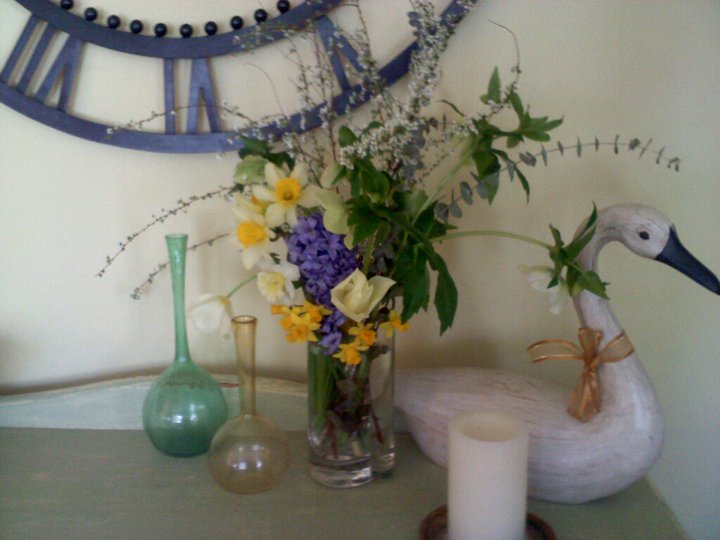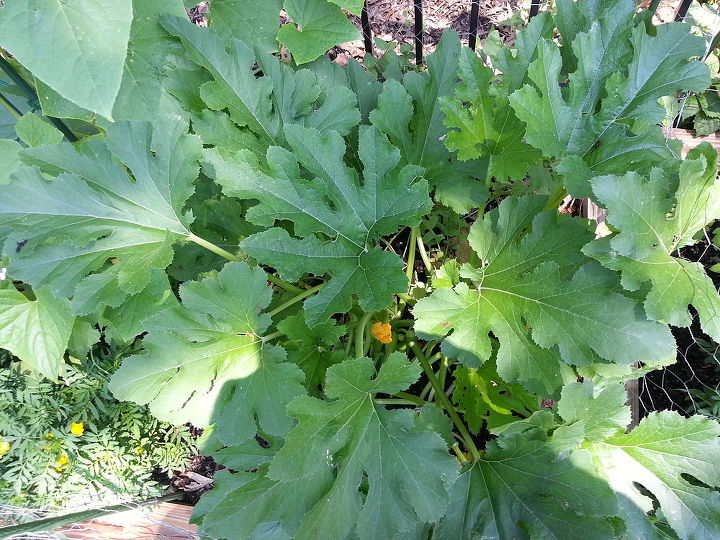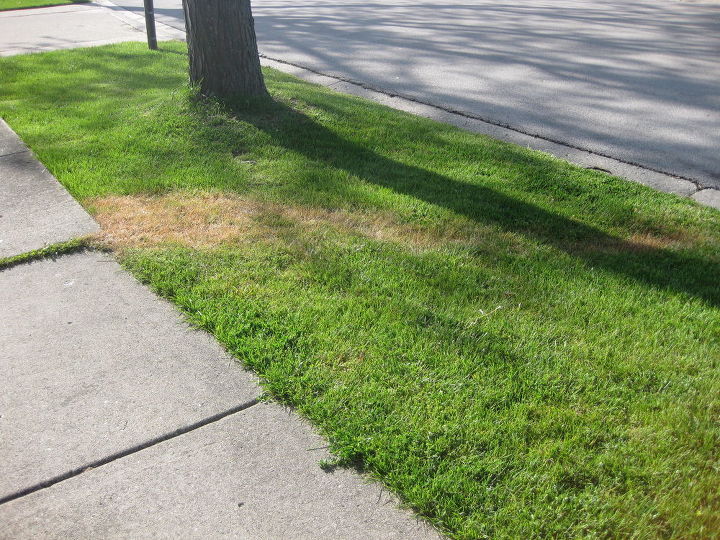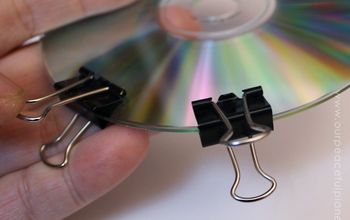Tips on transplanting tulips and daffodils?

-
how strange - I have the same question - I had tulips in a pot and I asked how I should "summer" them over - they told me they will like it better in the "ground" because it is cooler and more moist - I have a problem because they are multiplying and the "now" bulbs are very much smaller. If you find any answers to your question I hope some will chime for me too - Thank yuou for posting this
 Wanda B
on Mar 31, 2012
Helpful Reply
Wanda B
on Mar 31, 2012
Helpful Reply -
-
If you move the bulbs while the flower is still on, you'll not only know where it is (to dig up) but you will also know what color you are putting in that new spot.. Daffodils are not going to get eaten or dug up, but for tulips, it might be a good idea to wrap them in a plastic net onion bag. Just enough to deter the rodents, but still flexible enough for the bulb to grow thru next spring. Thin them out when you move them & water them in well. If you do this when the tulips are still in the bud stage, you'll have the chance to enjoy their look in their new location. They will likely become 2 bulbs by next spring.
 Ann S
on Mar 31, 2012
Helpful Reply
Ann S
on Mar 31, 2012
Helpful Reply -
-
I don't know about transplanting tulips, but I have moved daffodils around my yard. it's pretty simple, and it's a good idea because they spread easily, but tend to get overcrowded and don't produce as many flowers. They like sun and well-drained soil, and they should be moved in the fall, after they are dormant. Hope that helps. Good luck.
 3po3
on Mar 31, 2012
Helpful Reply
3po3
on Mar 31, 2012
Helpful Reply -
-
I move them as soon as they are finished flowering. You can divide them easier when they are leafed out. If you are worried about underground critters eating them- then plant them in berry baskets. I buy potted bulbs when they go on clearance (after the flowers are dead or dying) then plant them after I harden them off (put them outside during the day for a few days, then for a day and night or 2)..then plant keeping a good amount of soil from the pot around the bulbs and mix the remainder in with the fill dirt. All the ones I planted last spring came up this spring.
 Michelle E
on Mar 31, 2012
Helpful Reply
Michelle E
on Mar 31, 2012
Helpful Reply -
-
My house came with dozens of varieties of daffodils and other narcissus, most growing in inconvenient or inconspicuous places. After 8 years of dividing and transplanting bulbs, I've settled on a simple method: wait until leaves die down, then dig up the clumps. I separate different varieties of bulbs in plastic nursery pots and label for identification, then simply leave them outdoors until I'm ready to plant them over the next few months. Similar to Atlanta, central Mississippi fall and winter months allow ample time to garden. If I notice bulbs sprouting in the pots early spring, I accept that as reminder to finish planting.
 Debi L
on Mar 31, 2012
Helpful Reply
Debi L
on Mar 31, 2012
Helpful Reply -
-
It's actually pretty easy...after the tulips finish blooming, 'deadhead' the flower (not the stem) and let the leaves die down. It'll take 4-6 weeks...in that time you still want to keep them watered twice a week so the bulb doesn't dry out while it receives the nutrients from the leaves. Then dig them up, separate and store them in a paper bag in a cool dry place (around 50-60 degrees). Around the 1st of October, put them in the fridge for 4 weeks and then re-plant.
 Marg C
on Mar 31, 2012
Helpful Reply
Marg C
on Mar 31, 2012
Helpful Reply -
-
also...be careful where you store them because your temperatures are alot warmer than mine here in the north and you don't want the bulbs getting too warm.
 Marg C
on Mar 31, 2012
Helpful Reply
Marg C
on Mar 31, 2012
Helpful Reply -
-
While fall might be the best time to transplant daffodils, it will be challenging to do so unless you mark where the bulbs are now. For that reason, it can be more practical to do so in the spring, after the foliage has started to brown, which is usually 8 to 10 weeks after they finish blooming. @Wanda: I don't thinks there's much chance that tulips grown for pot culture will make much of a show next year, but you will certainly have a better chance if you get them in the ground. As with daffodils, this should be when the foliage starts to die back. Do deadhead the spent flowers so the plant doesn't try to make seed.
 Douglas Hunt
on Apr 01, 2012
Helpful Reply
Douglas Hunt
on Apr 01, 2012
Helpful Reply -
-
I just read through all the answers thus far and am inclined to agree with douglas hunt's reply, especially for Wanda: I would think you have a 50/50 chance of getting a second go round with the pot culture tulips but ONLY if they get planted as soon as you can. When I lived in Massachusetts, the zone was ideal for leaving tulips and daffodils year round in the ground, but in Atlanta what if you have a warmish winter? I would follow Margery C's advice to the letter to give these bulbs (and any others in your garden) the best shot.
 Karen M
on Apr 01, 2012
Helpful Reply
Karen M
on Apr 01, 2012
Helpful Reply -
-
I like to buy potted tulips in the spring and have planted several after the blooms were gone. They seem to do pretty well here in north Alabama - I have red and yellow that came back up and bloomed for several years - I even had a few blooms this year in spite of the mild winter. I would just dig and move them as soon as they finish blooming - I wouldn't bother with storing and refrigerating - it's too complicated and results for tulips in the South are not guaranteed even after all that trouble. Daffodils are usually more reliable and much less fussy - we had a cardboard box with some daffodil bulbs in it sitting outside, and the cardboard got wet and the dafffodil bulbs sent down roots through it and bloomed sitting on taop of the ground.
 Ellen H
on Apr 01, 2012
Helpful Reply
Ellen H
on Apr 01, 2012
Helpful Reply -
-
Actually I plan to move some in the fall. I have marked the spots of the "to be moved groups" with white plastic knives. D for white daf and D-Y for yellow daf and T for tulip (mine are all pink). They are all in one bed so I can live with the white cutlery till fall. I am going to mark the spots that I want to move them with clear plastic spoons with the same D, D-Y, or T written on the spoon with a sharpie. I am going to mark the bulbs that need to stay put with clear plastic knives. I am hoping the clear cutlery will disappear in the garden.
 Karen S
on Apr 01, 2012
Helpful Reply
Karen S
on Apr 01, 2012
Helpful Reply -
-
Wow! Great info from all! Thanks so much! Can't wait to move things around and see the results NEXT spring. :)
 Caitlin M
on Apr 01, 2012
Helpful Reply
Caitlin M
on Apr 01, 2012
Helpful Reply -
-
@Karen: You've done exactly what you need to do for fall transplanting.
 Douglas Hunt
on Apr 02, 2012
Helpful Reply
Douglas Hunt
on Apr 02, 2012
Helpful Reply -
-
I have been collecting old forks from yard sales and 'recycle' stores and use them to stick my plant label between the tines, and stick the handle in the ground.. Then when the plant dies down during the winter or after blooming I know not to plant something on top of whatever is already there, but under the ground. It works great for me, especially with bulb plants or ferns that die back during winter.
 Rose S
on Apr 05, 2012
Helpful Reply
Rose S
on Apr 05, 2012
Helpful Reply -
-
What a great idea Rose, my popsicle sticks don't work out so well.
 Linda C
on Apr 06, 2012
Helpful Reply
Linda C
on Apr 06, 2012
Helpful Reply -
-
My husband and I have been using plastic cutlery for years when it comes to gardening. Although, we are using them for vegetable gardening, they still work wonders!!!! I DO use them in MY flower beds so I know what is where, but I use clear cutlery. In the veggie gardens, we use white so it's easier to see.
 Nyomi R
on Apr 26, 2012
Helpful Reply
Nyomi R
on Apr 26, 2012
Helpful Reply -
Related Discussions
GNATS - How to get rid of them?
Somehow my house and garden got tiny gnats that killed my fuchsia plant and fly everywhere. I have tried ALL the Web recommendations - soap and oil dishes, sand in th... See more
Marigolds growing! Should I pinch the buds?
My marigold plants are growing. I heard that pinching the buds until Autumn will allow them to grow without killing the plant. Is this true?
Growing garlic
Growing our first garlic, should we wait until the leaves are drying out before we pick it? Husband picked first one today along with our first potatoes.
How to keep mice out of your garden?
Hi everyone, I have mice in my garden destroying my vegetables and I have also noticed them in the barn and shed. Please can someone tell me how to prevent them from ... See more
What's the best flower/plant to grow in Texas?
I know that opinions vary, but what's your opinion?!I have great luck w Rosemary plants. Green all year long.
Squash Plants Large and Healthy and no Squash Growing?
2nd Season in a ROW! Squash plants growing large and healthy leaves and the stems near the roots are looking healthy and turning dark green, getting flowers that grow... See more
Trail of dead grass mystery?
Trail of dead grass appeared two weeks ago that starts in neighbor's yard and goes to the sidewalk, then continues past the sidewalk in a line into the grass into my ... See more





